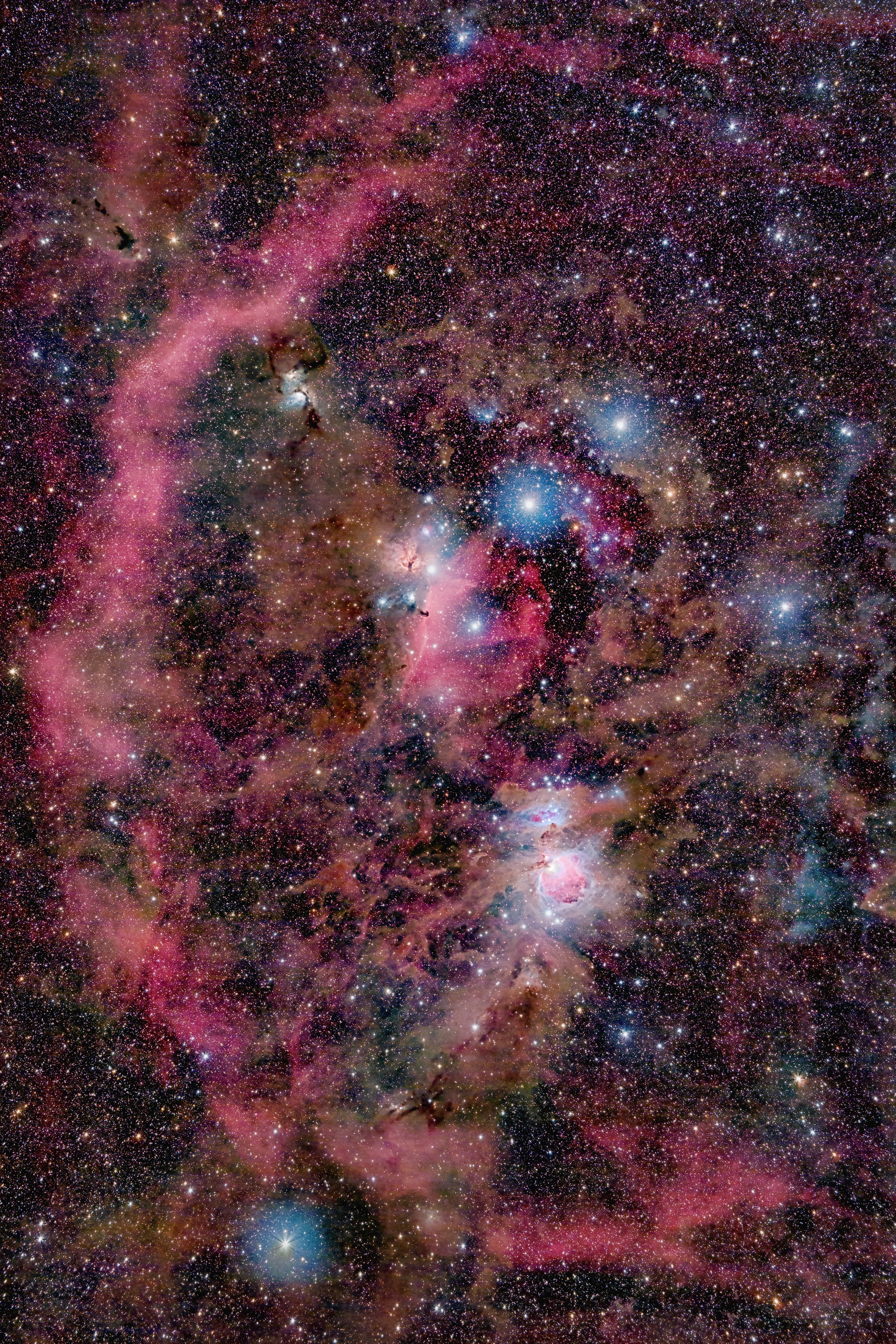
Many of the sky’s emission nebulae appear small, requiring high magnifications to even bring them into view. Some also can be hard to locate. Not Barnard’s Loop. Cataloged as Sharpless 2–276, this massive deep-sky object spans more than 10° within Orion.
Its common name comes from American astronomer Edward Emerson Barnard, who, during the last decade of the 19th century, photographed it while taking wide-field images of the sky.
Barnard’s Loop is one component of the Orion molecular cloud complex. Other well-known celestial objects that are part of this complex include the Orion Nebula (M42), the Horsehead Nebula (Barnard 33), the Flame Nebula (NGC 2024), and M78, which is the sky’s brightest reflection nebula.
The Loop (it’s actually an arc) is centered on the Orion Nebula. Ultraviolet radiation from hot new stars there causes the Loop to glow, mainly in Hydrogen-alpha light. And although that makes it an emission nebula, researchers at the Center for Astrophysics | Harvard & Smithsonian used both 2D and 3D data to show that it probably formed from a supernova explosion between 2 million and 4 million years ago.
By far, the best views of this object are created by astroimagers, but you can still observe its brightest parts. Giant binoculars equipped with nebula filters are the best way to search for it. That’s because no telescope has a wide enough field of view to take in even the brightest section, which stretches nearly 6°.
Still, if you want to use a telescope, start with the eyepiece that provides the widest field and attach a nebula filter to it. You must view from a dark site and be willing to take your time. With your scope pointed to the general area, start moving it around slowly. What you’re looking for is a slight diffuse brightening in that part of the sky.









